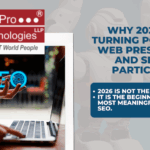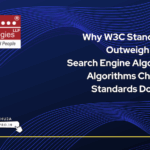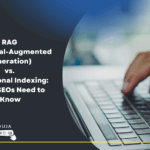When a client decides to revamp their website and improve SEO, the first step is not jumping into design changes or keyword research. Instead, it starts with a comprehensive website audit report. An ideal audit report serves as a roadmap, helping the client understand the current status of their site, identify gaps, and prioritize the right actions for both redesign and SEO.
Here’s how to prepare a clear, actionable, and client-friendly audit report:
- Start With the Purpose of the Audit
Every audit report should begin by explaining why it’s being done. A client planning a redesign and SEO revamp usually has one or more of these goals:
Improve online visibility and traffic.
Modernize the site’s design for better branding and user trust.
Improve user experience and conversions.
Ensure technical compliance with search engines.
A brief summary of the client’s objectives sets the tone and ensures alignment.
- Cover Website Functionality and User Experience
Before diving into SEO, highlight how the website functions for real users. Include:
Design and Navigation: Is the site modern, mobile-friendly, and intuitive?
Performance: Page loading speed, Core Web Vitals, responsiveness.
Usability Issues: Broken links, cluttered menus, outdated visuals, confusing CTAs.
Accessibility: Can differently-abled users navigate the site?
👉 This section helps clients visualize why a redesign is not just cosmetic, but essential for better performance.
- Analyze Technical SEO Health
A website redesign is the right time to fix technical foundations. The audit should check for:
Indexing & Crawlability: Pages blocked by robots.txt, sitemap errors, duplicate content.
Site Architecture: URL structure, hierarchy, internal linking.
HTTPS & Security: SSL issues, mixed content warnings.
Mobile Responsiveness: Compatibility across devices.
Core Web Vitals: LCP, CLS, and FID metrics.
Provide simple explanations — e.g., instead of just saying “Crawl errors,” write “Google cannot read 30% of your pages due to errors, so they never show up in search results.”
- Review Content Quality & Relevance
SEO is not just about keywords — it’s about quality and authority. Audit the site’s content by checking:
Relevance: Does the content address the target audience’s needs?
Depth: Thin or outdated content that needs updating.
Keyword Coverage: Missed opportunities, keyword cannibalization.
EEAT Factors (Experience, Expertise, Authoritativeness, Trustworthiness): Is content backed by credible sources and expertise?
Here, suggest whether existing content can be updated or if fresh, authoritative content needs to be created during redesign.
- Evaluate On-Page SEO Factors
Highlight gaps in elements that directly influence rankings:
- Title tags, meta descriptions, headers.
- Image optimization (alt text, file size).
- Schema markup and structured data.
- Internal linking strategy.
This ensures the redesign will integrate SEO best practices right from the start.
- Check Off-Page and Competitor Signals
Clients often overlook this, but it’s crucial:
Backlink Profile: Quality vs spammy links.
Brand Mentions & Citations: How the site appears outside its domain.
Competitor Benchmarking: How competitors rank and what they’re doing better.
👉 Including this motivates clients to invest in SEO beyond the redesign.
-
- Prioritize Recommendations with an Action Plan
A good audit doesn’t just list problems; it gives a roadmap:
Quick Fixes: Broken links, missing tags.
Medium-Term Tasks: Content revamp, site architecture.
Long-Term Strategy: Building authority with content + backlinks, monitoring performance.
Use visuals like a priority matrix (High / Medium / Low impact) so clients can make informed decisions.
- Present in a Client-Friendly Format
Avoid overwhelming clients with jargon. Instead:
- Summarize findings in a one-page executive summary.
- Use charts, graphs, and screenshots for clarity.
- Provide a before vs after vision of how redesign + SEO will improve performance.
- This makes the audit report not just a technical document, but a decision-making tool.
- Positioning the Website for the New Wave of AI Search
Search is evolving rapidly, and AI-driven search results (like Google’s AI Overviews, Perplexity, ChatGPT, and other AI assistants) are changing how people discover information. A website redesign is the right moment to ensure your site is AI-ready, not just SEO-ready.
Here’s how an upgrade helps:
Structured Content for AI: Well-organized content with schema markup helps AI systems easily understand and surface your content in direct answers.
Authority & Credibility: AI search rewards sites that demonstrate EEAT (Experience, Expertise, Authoritativeness, Trustworthiness). Revamped sites with updated, authoritative content have a higher chance of being cited by AI tools.
User Intent Alignment: AI tools aim to give complete answers. A redesign that focuses on in-depth, audience-focused content ensures your brand gets visibility even if the click-through rates change.
Fast & Accessible Experiences: AI considers site usability signals too. A redesigned, mobile-optimized, and fast-loading website stands a better chance of being recommended as a trusted source.
Cross-Platform Discovery: With AI search spreading across devices, browsers, and apps, your revamped website acts as the content hub that supports citations, snippets, and visibility across different AI tools.
👉 In short, the website revamp isn’t just about a fresh look — it’s about making the business visible, relevant, and trustworthy in an AI-first search landscape.
- Educating and Convincing the Client About the Upgrade
Even when the audit highlights major gaps, some clients hesitate to invest in a full redesign. That’s where education and clear communication make all the difference. The audit report should not only list findings but also help the client understand the “why” behind the upgrade.
Here’s how you can do that effectively:
Translate Tech Into Business Impact: Instead of saying “Your site has poor Core Web Vitals,” explain “Your slow site speed is causing visitors to drop off, leading to lost leads and sales.”
Use Before-and-After Scenarios: Show mockups, case studies, or simple examples of how a redesigned site can look and perform compared to the current one.
Highlight Missed Opportunities: Explain how outdated design, thin content, or weak SEO is preventing the site from showing up in AI search or being recommended by assistants like ChatGPT, Perplexity, or Google’s AI Overviews.
Frame It as a Long-Term Investment: A redesign isn’t just about fixing today’s problems — it’s about future-proofing the business for the next 3–5 years of digital change.
Provide a Phased Roadmap: Some clients may be wary of costs. Break the upgrade into phases (technical fixes first, design next, content updates ongoing), so it feels manageable.
Back It With Data: Use audit visuals (heatmaps, bounce rate charts, competitor comparisons) to show the measurable ROI of an upgrade.
👉 The goal is to move the conversation from “Do we really need this?” to “How soon can we start?”.
Point To Ponder On…
There is no fixed template for a website audit because every website is at a different stage of its journey — whether it’s a new site, an established portal, or a large e-commerce platform. The scope and depth of the audit always depend on the website’s current status, business objectives, and growth plans.
What remains constant, however, are the guidelines. These ensure that the audit covers all critical aspects — from user experience to traditional search optimization, and now, the evolving requirements of AI-driven search. By following these principles, the audit report doesn’t just highlight gaps but also provides a customized roadmap to make the website future-ready, relevant, and competitive.
An ideal website audit report is not about showing errors; it’s about showing possibilities. When done right, it helps clients see how redesign and SEO together can:
- Improve visibility
- Build trust with visitors
- Drive business growth.
So, whether you’re a business owner or an SEO consultant, remember: a detailed, client-friendly audit is the foundation of a successful website transformation.
September 22, 2025







